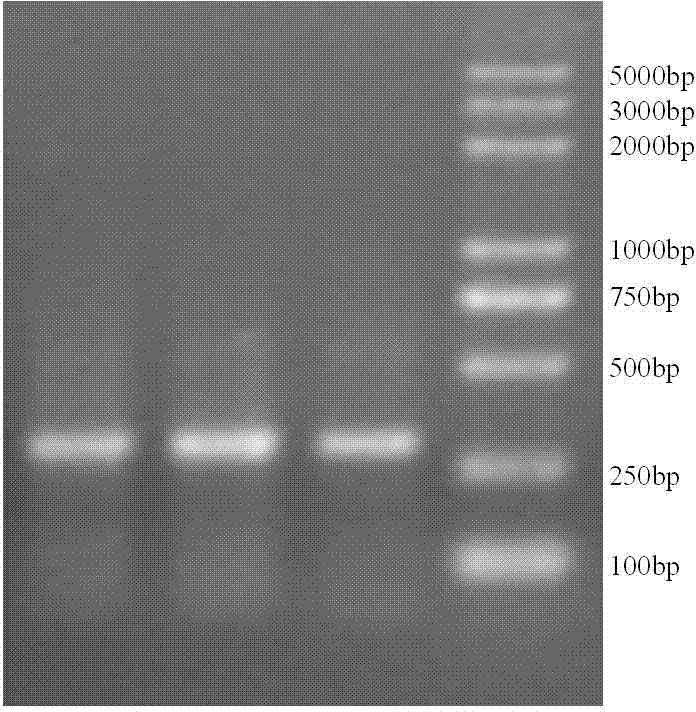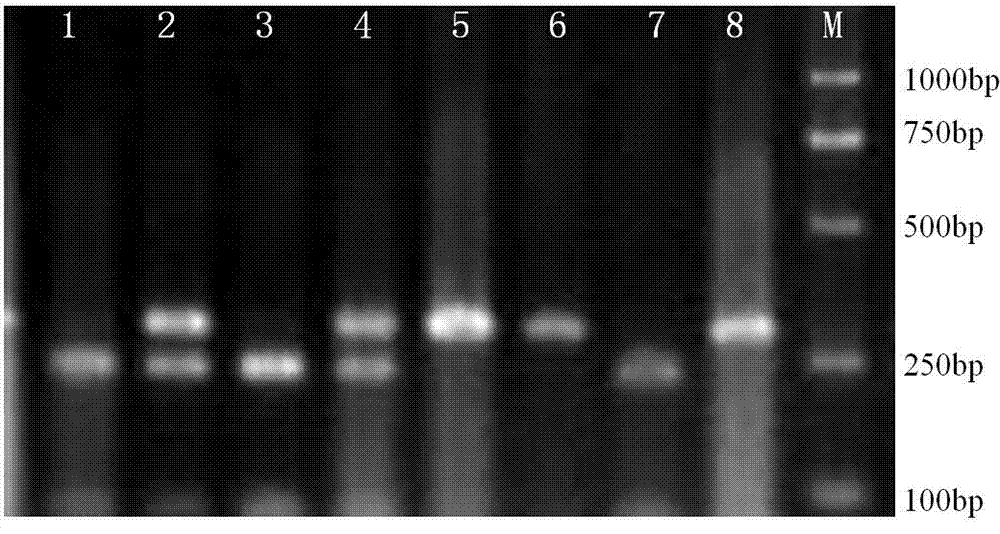Molecule marking method for pig backfat thickness property
A technology of molecular markers and pig backfat thickness, which is applied in biochemical equipment and methods, microbiological determination/inspection, etc., can solve the problems of low accuracy and blindness in seed selection, achieve simple operation, speed up the selection process, The effect of shortening the generation interval
- Summary
- Abstract
- Description
- Claims
- Application Information
AI Technical Summary
Problems solved by technology
Method used
Image
Examples
Embodiment 1
[0069] See Table 3 for the polymorphism detection results of the long-chain acyl-CoA synthetase 1 (ACSL1) gene of 287 Huai pig new strain II line fourth-generation sows. The T allele frequency was 0.472, and the C allele frequency was 0.528. There were abundant polymorphisms at this site in this pig herd.
[0070] Table 3 Genetic parameters of the ACSL1 gene polymorphic site in the fourth generation of Huai pig new line II line
[0071]
[0072] Association analysis of long-chain acyl-CoA synthetase 1 (ACSL1) gene polymorphism and backfat thickness in a new line of Huai pig
[0073]The live backfat thickness at the penultimate rib was measured with a backfat measuring instrument at a body weight of 90kg, and the least squares analysis was carried out on the backfat thickness of 287 pigs by using the general linear model (GLM) program of SPSS13.0 software, and the gene effect The analysis was carried out and the results are shown in Table 4. The average backfat thickness o...
Embodiment 2
[0078] Yorkshire pigs are world-renowned lean-meat breeds, featuring fast growth, thin backfat, high lean meat percentage, and low feed-to-meat ratio. They are mainly used to produce hybrid sows.
[0079] The polymorphism detection results of the long-chain acyl-CoA synthetase 1 (ACSL1) gene of 239 large gram sows are shown in Table 5. The frequency of T allele and C allele was 0.565 and 0.435 in the Large York pig herd, and there were abundant polymorphisms at this locus in this herd.
[0080] Table 5 Genetic parameters of polymorphic sites of ACSL1 gene in Yorkshire pig herd
[0081]
[0082] Association analysis of long-chain acyl-CoA synthetase 1 (ACSL1) gene polymorphisms and backfat thickness in large gram pigs
[0083] The live body backfat thickness at the penultimate rib was measured with a backfat measuring instrument at a body weight of 90kg, and the least squares analysis was carried out on the backfat thickness of 239 large gram pigs by using the general linea...
PUM
 Login to View More
Login to View More Abstract
Description
Claims
Application Information
 Login to View More
Login to View More - R&D
- Intellectual Property
- Life Sciences
- Materials
- Tech Scout
- Unparalleled Data Quality
- Higher Quality Content
- 60% Fewer Hallucinations
Browse by: Latest US Patents, China's latest patents, Technical Efficacy Thesaurus, Application Domain, Technology Topic, Popular Technical Reports.
© 2025 PatSnap. All rights reserved.Legal|Privacy policy|Modern Slavery Act Transparency Statement|Sitemap|About US| Contact US: help@patsnap.com



